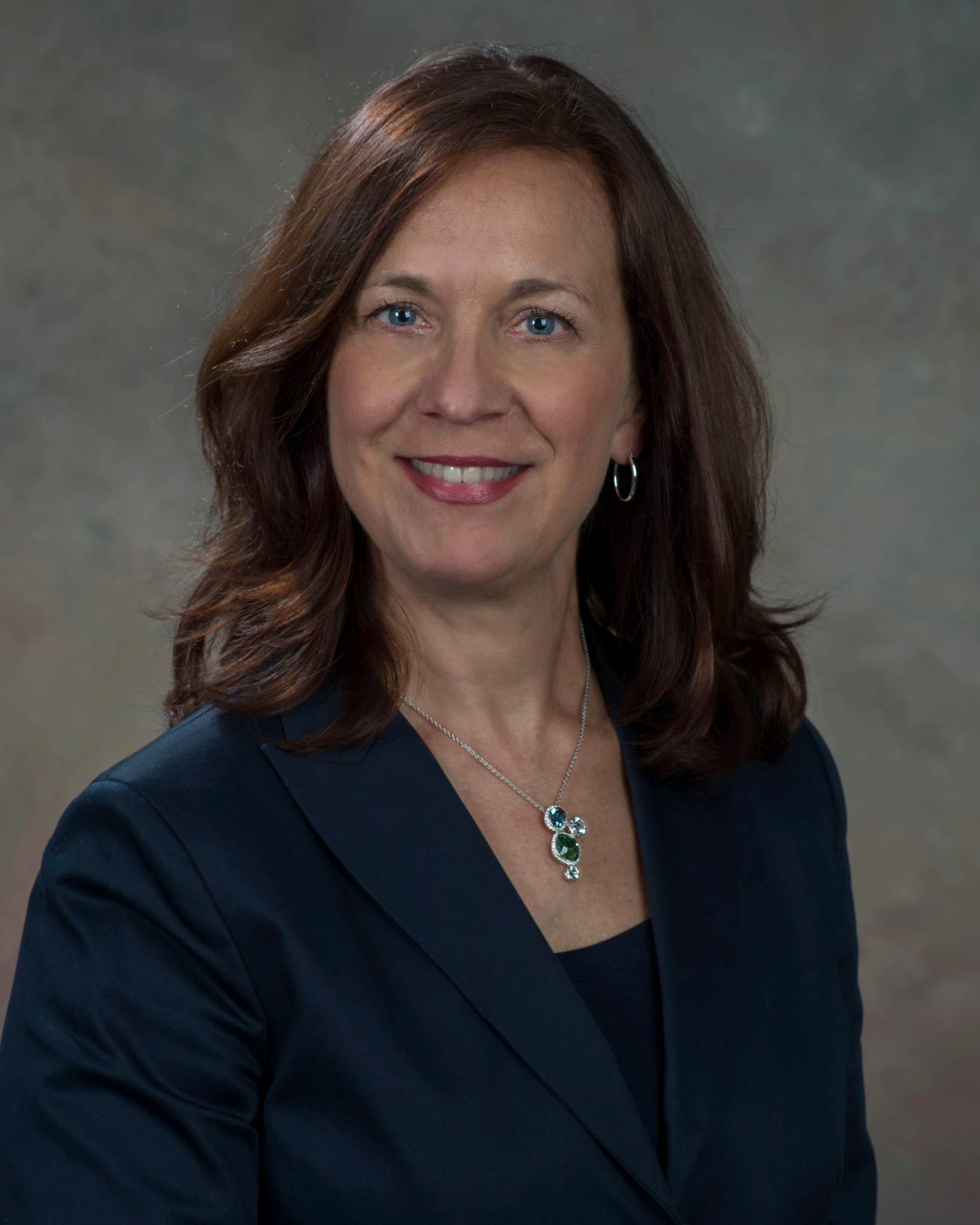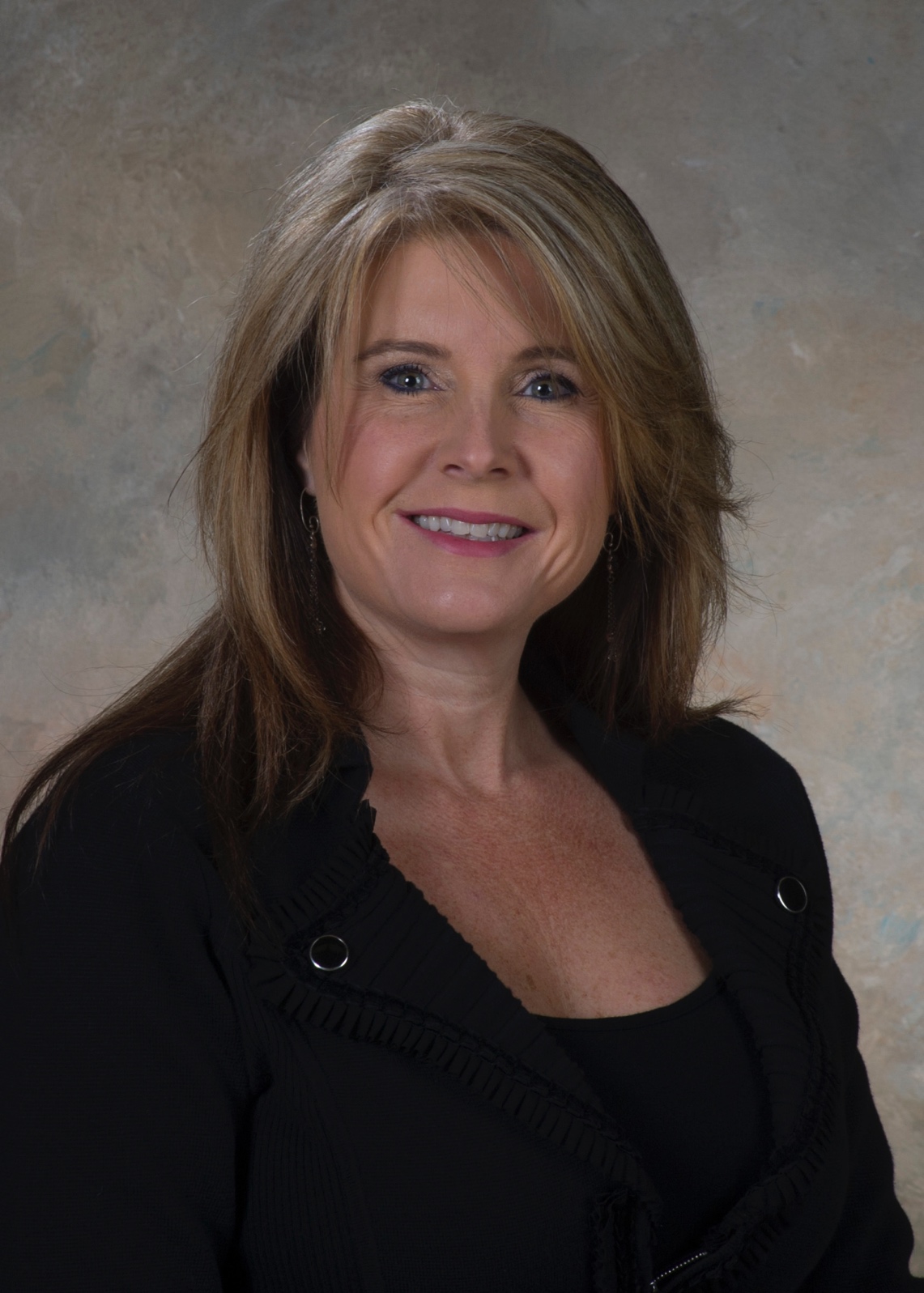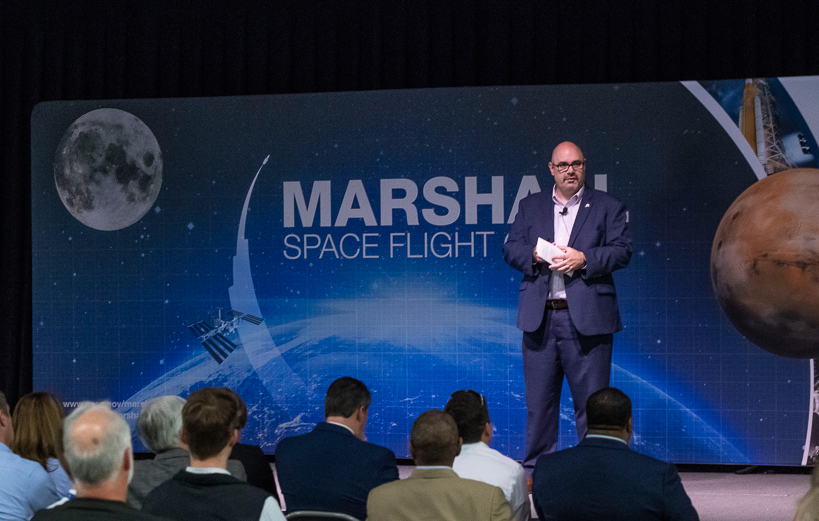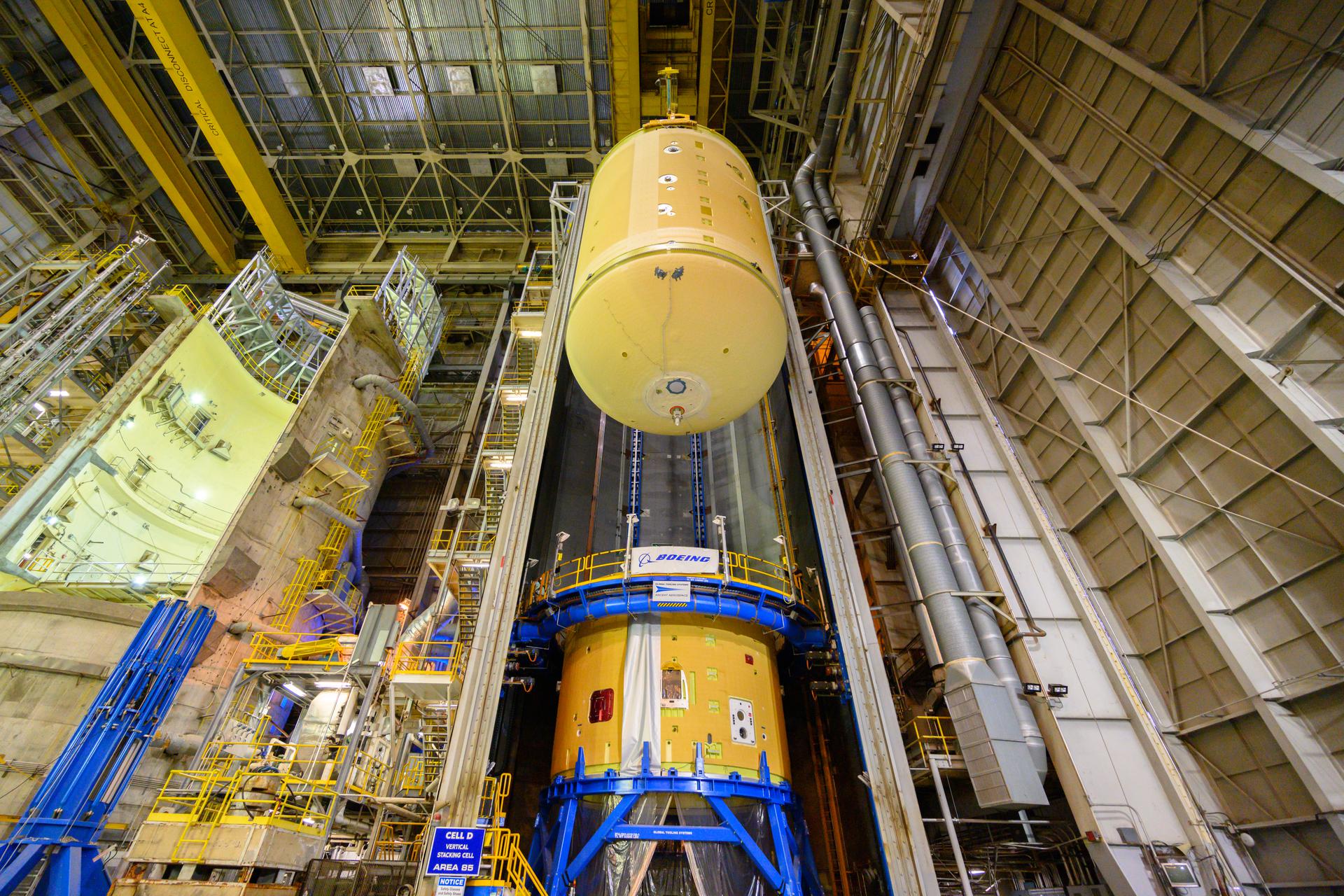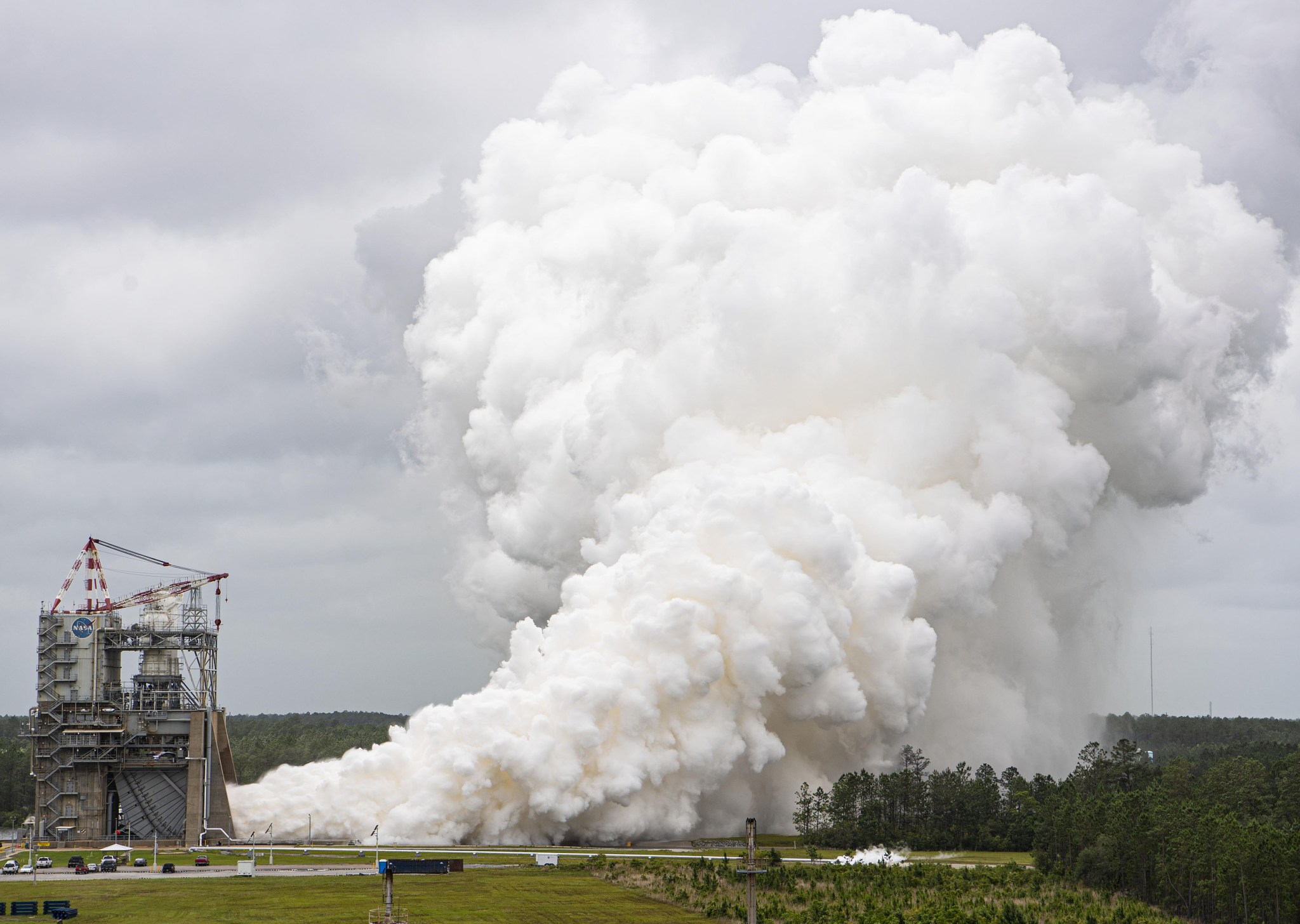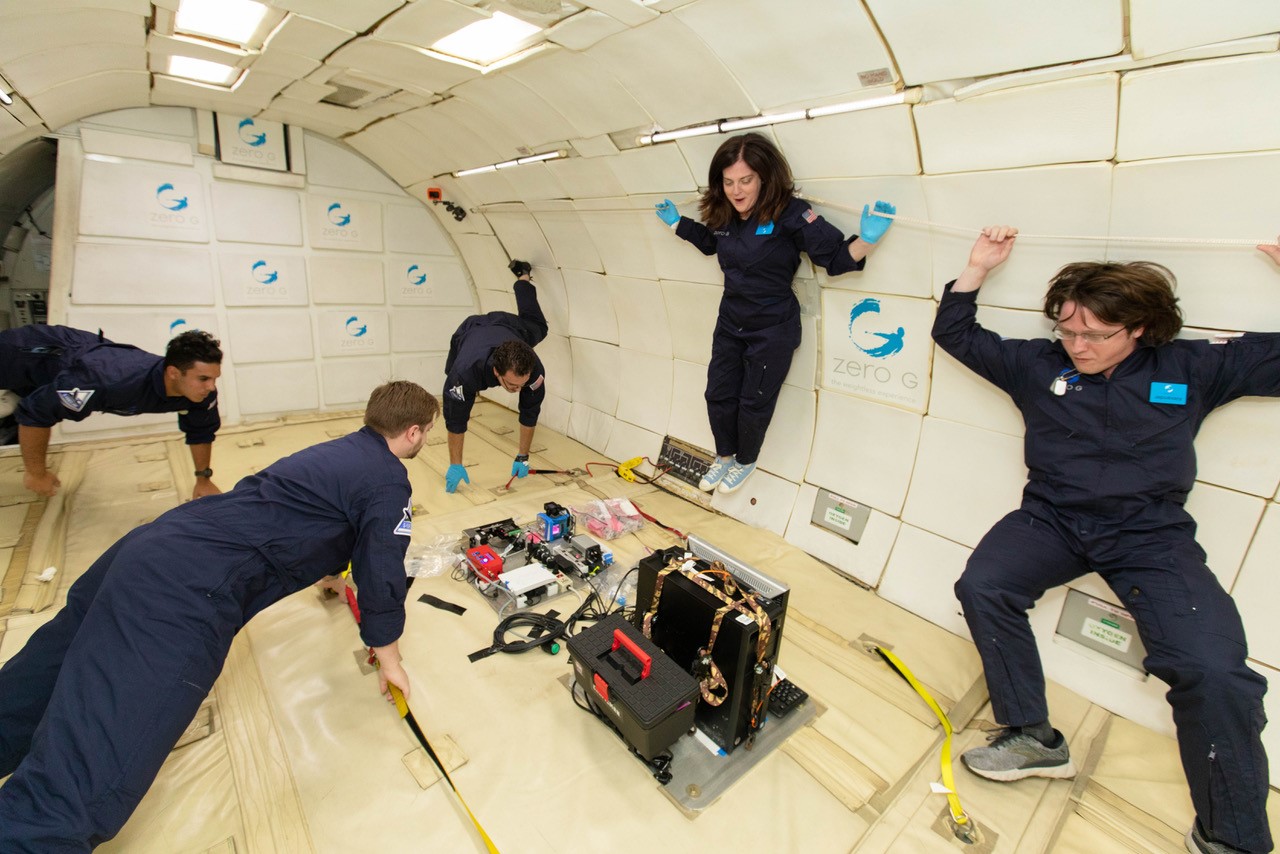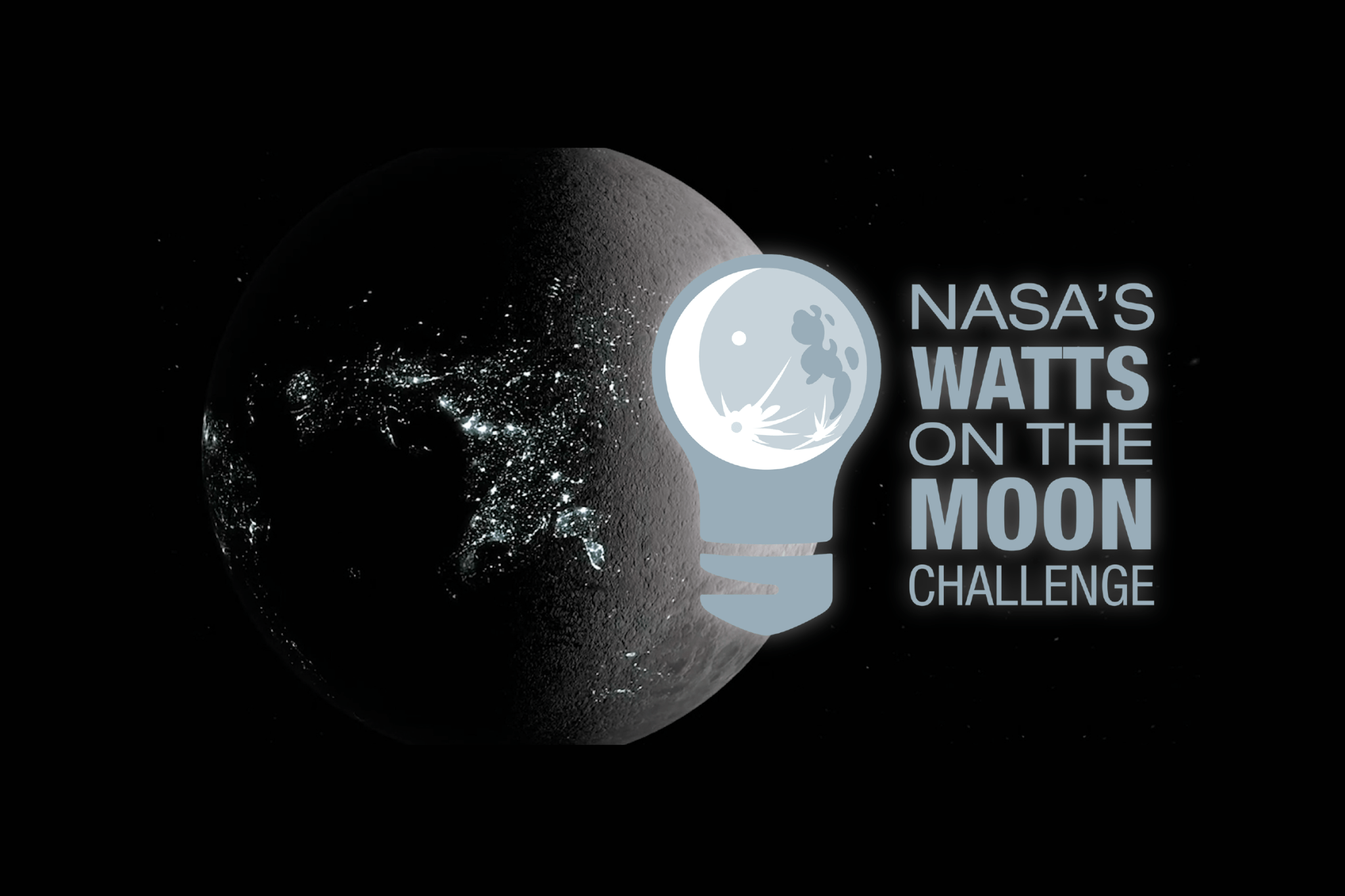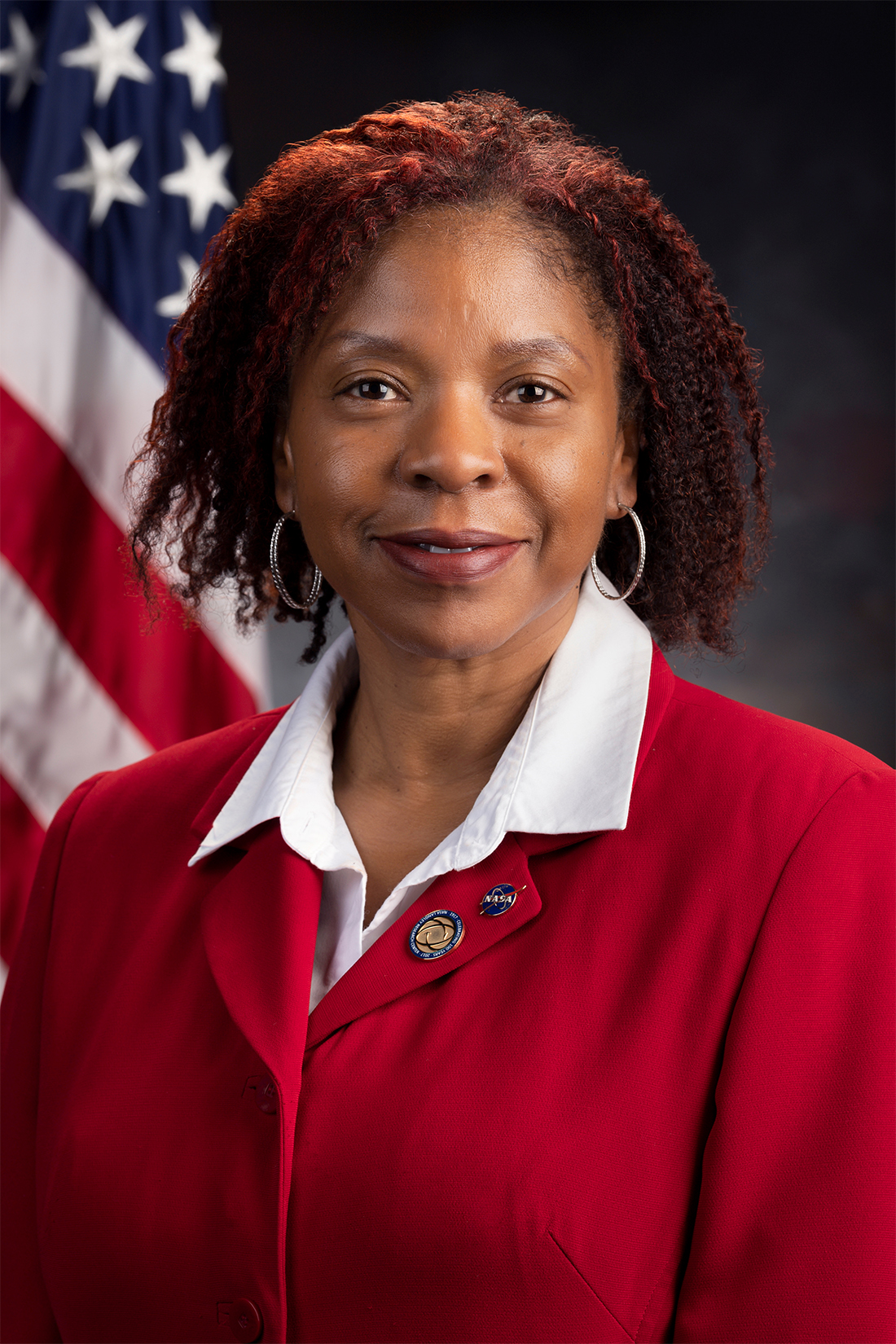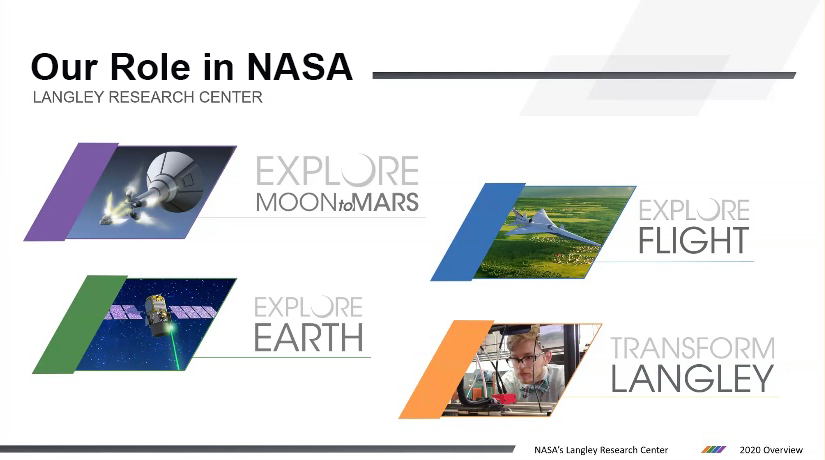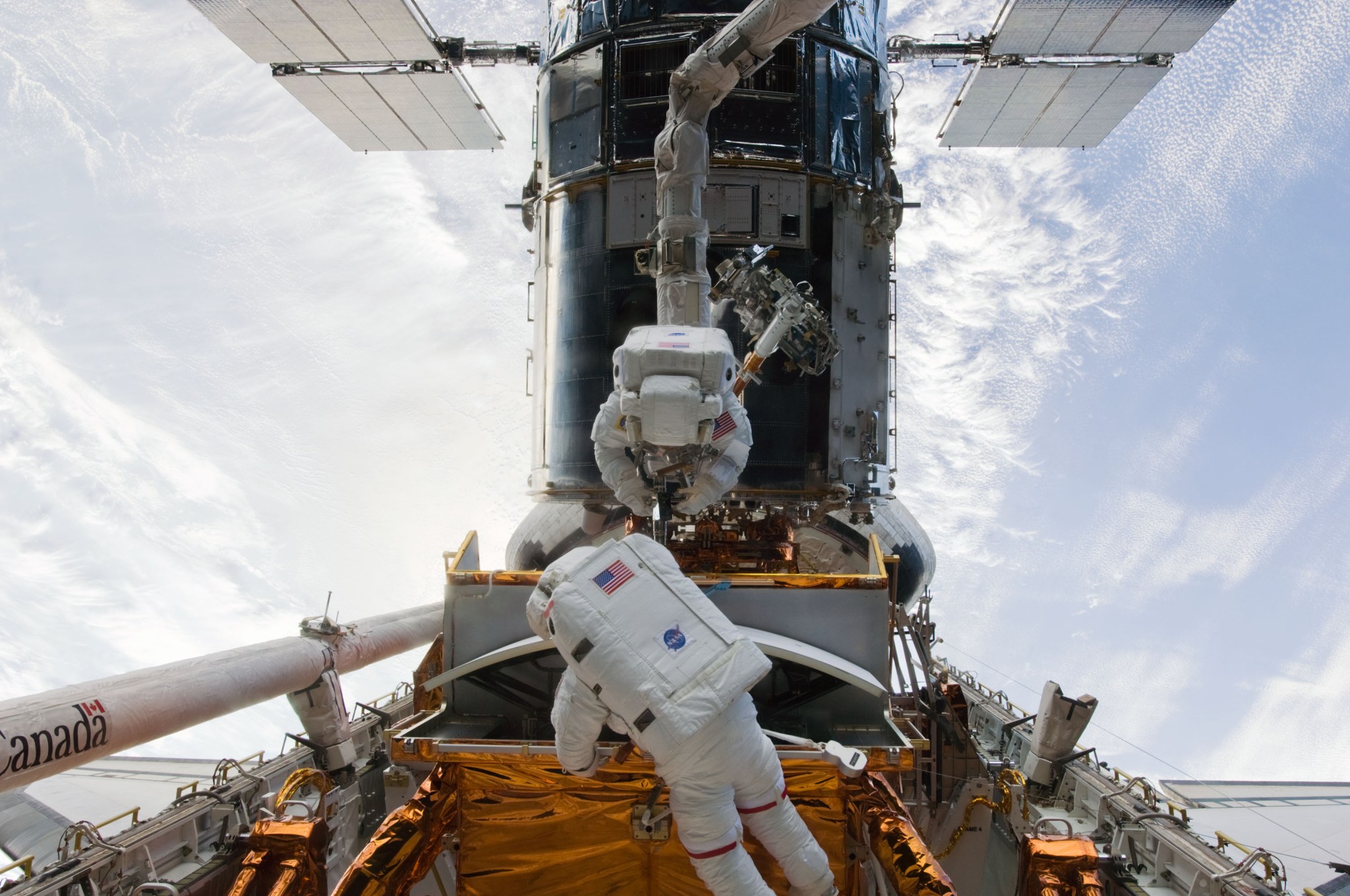June Malone Named Director of Office of Strategic Analysis & Communications
June Malone has been named director of the Office of Strategic Analysis & Communications at NASA’s Marshall Space Flight Center, pending approval by the Office of Personnel Management. She will lead the organization in providing strategic planning, objective analysis, and comprehensive communication to support the policy, program, and budget decisions for Marshall.
Malone’s new position is part of the Senior Executive Service – the personnel system covering top managerial positions in federal agencies.
Malone has worked in a variety of leadership roles throughout her 30-year NASA career. She previously was manager for Marshall’s Office of Communications, overseeing the center’s full communications portfolio, including media, social media, website content, exhibits, public inquiries, and employee communications. She spent a one-year assignment as the Office of Strategic Analysis & Communications deputy director and also worked in Marshall’s Office of Human Capital, where she established a new Human Resources Business Partner organization and operating model.
Malone has also been Marshall’s news chief, where she led media and social media for all center projects, programs, and activities, including crisis and risk communication. She has managed the public affairs and media relations activities for the Space Shuttle Propulsion Projects Office, the Space Launch Initiative, the Advanced Space Transportation Program, and the full suite of science and engineering work at the center. Malone was the primary NASA spokesperson for the Space Shuttle Propulsion Projects Office, communicating with the public on technical subjects and controversial issues that included the Columbia accident and Return to Fight.
Prior to joining NASA, Malone was an active-duty Air Force officer. She worked at the Pentagon on the secretary of the Air Force staff in the Office of Public Affairs as a public affairs officer, and subsequently at Tactical Air Command at Langley Air Force Base in Hampton, Virginia, during Operation Desert Storm. She formulated and implemented public affairs and media relations policy, strategic public affairs activities, and media relations plans.
Malone holds a bachelor’s degree in communications from Southern Illinois University in Carbondale and a master’s degree in communications research from Florida State University in Tallahassee. Her awards include a Silver Snoopy, NASA Outstanding Leadership Medal, Air Force Meritorious Service Medal, and Rotary National Award for Communication. An Illinois native, Malone and her husband, Roy, reside in Huntsville. Their son, Wil, is a Marshall engineer, and their daughter, Madison, is a doctor in residency in San Francisco.
Julie Bilbrey Named Deputy Director of Safety and Mission Assurance Directorate
Julie Bilbrey has been named deputy director of the Safety and Mission Assurance Directorate at NASA’s Marshall Space Flight Center, pending approval by the Office of Personnel Management. Bilbrey will be jointly responsible for planning and directing the center’s safety, reliability, and quality engineering and assurance operations.
Bilbrey’s new position is part of the Senior Executive Service – the personnel system covering top managerial positions in federal agencies.
Since 2009, Bilbrey has held multiple leadership positions in the directorate, including chief of the Program Analysis and Systems Integration Branch, manager of the Mission Systems Assurance and Technical Support Department and, currently, manager of the Vehicle Systems Department. She recently completed a temporary assignment as acting deputy manager of Marshall’s Science and Technology Office.
In 2005, Bilbrey was named associate manager of the Science & Mission Systems Office, where she also held the position of chief operating officer of the National Space Science and Technology Center. The previous two years, she was technical assistant to the director of the Space Systems Programs/Projects Office. In 2003, Bilbrey was an International Space Station payload operations director, where she managed and directed both mission preparation and real-time space station payload operations.
From 1998-2002, Bilbrey was lead of the Flight Training Integration Team, Training and Crew Operations Group, within the Flight Projects Directorate. She joined Marshall in 1987 and spent the first 11 years of her career in Spacelab mission operations, where she trained payload flight crews and ground support personnel while serving in various flight controller positions.
Bilbrey holds a bachelor’s degree in industrial and systems engineering from Georgia Tech in Atlanta. She has received numerous awards, including a Silver Snoopy, Space Flight Awareness Honoree award, NASA Outstanding Leadership Medal, and two Center Director’s Commendations.
Take 5 with Joseph Pelfrey
By Daniel Boyette
Joseph Pelfrey’s proudest moment since joining NASA in 2004 didn’t involve a launch or innovation. Instead, it was a conversation following a public speaking engagement.
Pelfrey, manager of the Human Exploration Development & Operations Office at NASA’s Marshall Space Flight Center, had given a talk about his team’s missions and accomplishments. Afterward, he was approached by a parent, who thanked him, explaining that their child was more engaged during the talk than they had ever seen.
“At that moment, I realized how much impact we can have in sharing our pursuit of exploration and how lucky we are to have this mission,” Pelfrey said.
Pelfrey also was once a youngster intrigued with aviation and spaceflight, though he had little exposure to either while growing up in the small, blue-collar town of Cheraw, South Carolina. He wanted to be a pilot and astronaut but had vision restrictions that prevented him from such paths.
“Regardless, pursuing a career in the aerospace industry was always in my plan,” he said.
When away from work, Pelfrey enjoys camping, traveling, Auburn University football, hunting, and working on his project car – a 1958 Austin Healey Sprite.
Question: How do you encourage teamwork, collaboration, and integration, especially in this unprecedented telework environment?
Pelfrey: I continue to be impressed and proud of how our team has adapted and innovated during the pandemic, all while taking care of each other. Collaboration and teamwork is a clear expectation from our entire Human Exploration Development & Operations leadership team and we do our best to be an example as we work internally across our offices, as well as externally with partner organizations. Telework has definitely introduced new challenges and our teams have found unique ways to stay connected and integrated, all of which will make us a more resilient organization for the future. I’ve tried to increase virtual communication and just completed virtual meetings with all of our individual offices, providing an opportunity for team member Q&A. We’ve also introduced a new virtual lunch and learn series bringing in different speakers both internal and external to the org to increase overall awareness and integration across the teams.
Question: How are you managing your personal and your team’s work-life balance, especially now, more than a year into the COVID-19 pandemic?
Pelfrey: For the team, we continue to encourage folks to use their leave and step away from the computer. We try to keep meetings to core business hours and I try to make use of the “send later” function in Outlook so I’m not dropping emails in odd hours, setting an expectation of a response. Personally, I’ve tried to protect the time on Quiet Fridays to avoid meetings and get caught up without having to work nights and weekends as much.
Question: What key partnerships are your team pursuing to help NASA build and develop a sustainable presence on the Moon? Help push the boundaries of science, technology, and/or human exploration?
Pelfrey: Our entire portfolio of work includes partnerships internal to Marshall and NASA as well as commercial and international partners, and these relationships are key to meeting our goals and commitments. We lead and partner in many aspects of agency strategic missions including the Artemis program. Our partnership with the International Space Station program continues to be a key area for developing the technologies, operations, and skills we need to travel further for longer durations. We lead commercial partnerships for advancing habitation system development for surface and in-space habitation as well as international partner integration for the Gateway International Habitation module. Our teams have also been instrumental to ensuring the success of launch vehicle development for Commercial Crew Program partners. Our payload and mission operations team continues to be an area of interest for partnerships and future pursuits for science and technology missions as well as other government agencies. Overall, our future success will depend on leveraging these partnerships and fostering new ones.
Question: How does your team honor and demonstrate NASA’s commitment to creating a diverse and inclusive environment where team members are valued for their unique contributions?
Pelfrey: Building and maintaining a diverse workforce takes intention and focus on ensuring we continuously evaluate the demographic of our team. This is accomplished through competitive hiring opportunities as well as expectations for our leadership team to mentor team members from underrepresented groups. Inclusion is the harder part in my mind. Once we have that diverse team, we must ensure each one of our team members has the most opportunity to contribute to the challenges we face. I hope to ensure we have an environment where every single individual can be successful, bringing their “whole self,” which includes their backgrounds, experiences, and perspectives.
Question: Why do you think your team is successful at staying mission-focused?
Pelfrey: Our organization’s heritage with human exploration and discovery goes back to the earliest days of NASA, including support for the launches of the first Mercury astronauts on Redstone and Atlas rockets. During the Apollo Program, engineers in the Huntsville Operations Support Center monitored vehicle performance during Saturn V launches, linked directly with the Launch Control Center at Kennedy Space Center. Our predecessor organizations were responsible for developing the Environmental Control and Life Support System, payload systems, and several modules for the space station. The HOSC began long-duration human spaceflight operations when the Skylab space station launched in 1973, providing technical expertise to the Mission Control Center at Johnson Space Center. The HOSC provided launch support for the space shuttle, as it had the Saturn V, but it was with Spacelab that Marshall’s operations support role expanded further, with science operations that paved the way for today’s support for the space station. Many of our projects and activities allow our team members see the entire lifecycle of a project in shorter timeframes, which creates excitement and focus. And our mission operations teams get to see the results of their work every day when working with the crew aboard the space station. Overall, it’s our extensive history and experience that allow us to stay mission-focused, people-invested, as we look forward to even greater accomplishments in the future.
Boyette, an LSINC Inc. employee and the Marshall Star editor, supports Marshall’s Office of Strategic Analysis & Communications.
Recent Take 5s
Bill Hill, director of Marshall’s Safety and Mission Assurance Directorate.
Rahul Ramachandran, manager of NASA’s Inter-Agency Implementation and Advanced Concepts Team at Marshall.
Susan Whitfield, Marshall’s director of human resources
Jason Detko, director of Marshall’s Office of Procurement
Rae Ann Meyer, deputy manager of Marshall’s Science and Technology Office
NASA Joins Two Major Artemis II Core Stage Structures
Technicians at NASA’s Michoud Assembly Facility stacked two of three hardware elements for NASA’s Space Launch System rocket April 28. Crews connected the liquid oxygen tank flight hardware with the intertank. Later, they will add the forward skirt to form the upper portion of the core stage that will help power Artemis II, the first crewed mission of NASA’s Artemis program and second flight of the SLS rocket. Crews moved the intertank to the assembly and stacking area in March, and then moved the liquid oxygen tank to the same area. The joining of the three structures together is the first major assembly of hardware for the Artemis II core stage. When completed, the upper part of the stage will stand 66 feet tall – just a fraction of the entire core stage. The fully-assembled, 212-foot-tall rocket stage consists of five hardware elements. Together, the core stage and its four RS-25 engines will provide more than 2 million pounds of thrust to help send Artemis II astronauts beyond Earth’s orbit to lunar orbit. The liquid oxygen tank is one of two giant liquid propellant tanks on the core stage. It will hold 196,000 gallons of liquid oxygen cooled to minus 297 degrees Fahrenheit. (NASA)
NASA Fires Up Fourth RS-25 Engine Test for Future Artemis Moon Missions
NASA conducted its fourth RS-25 single-engine hot fire of the year May 20, a continuation of its seven-part test series to support development and production of engines for the agency’s Space Launch System rocket on future missions to the Moon. The engine was fired for more than eight minutes (500 seconds) on the A-1 Test Stand at Stennis Space Center, the same amount of time RS-25 engines need to fire for launch of the SLS rocket. The test series is designed to provide valuable data to Aerojet Rocketdyne, prime contractor for the SLS engines, as it begins production of new engines for use after the first four SLS flights. Four RS-25 engines, along with a pair of solid rocket boosters, will help power SLS at launch. With testing of the engines for the rocket’s first four Artemis program missions to the Moon already completed, operators now are focused on collecting data to demonstrate and verify various engine capabilities while reducing operational risk. During the May 20 test, the team fired the engine at 111% of its original power level for a set duration of time, the same level that RS-25 engines are required to operate during launch. SLS is the most powerful rocket NASA has ever built and the only one capable of sending NASA’s Orion spacecraft, astronauts, and supplies to the Moon in a single mission. RS-25 tests at Stennis are conducted by a combined team of NASA, Aerojet Rocketdyne, and Syncom Space Services operators. (NASA)
Marshall Research Team Soars to Success in Microgravity
By Taylor Goodwin
No force – including gravity – could hold a team of NASA researchers down in their quest for a scientific breakthrough to benefit life on Earth and in space.
Scientists from NASA’s Marshall Space Flight Center completed two parabolic flights April 28 and 29 to test modifications to a payload called the ring-sheared drop.
“This demonstration proved that the modified hardware is capable of deploying and pinning each of the protein solutions that will be used in an experiment using the ring-sheared drop hardware on the International Space Station,” said Dr. Louise Strutzenberg, co-investigator on the ring-sheared drop parabolic re-flight experiment. “The lessons learned will prepare us to take the next steps before resuming testing on the space station.”
The team flew out of Fort Lauderdale, Florida, on Zero Gravity Corporation’s modified Boeing 727 aircraft, which achieves periods of variable gravity through a series of maneuvers called parabolas. The plane, called G-Force One, completed 30 parabolas each day – enabling the teams to tend to their experiment in weightlessness for 22-second intervals.
Developed by Marshall and Rensselaer Polytechnic Institute of Troy, New York, the experiment studies the formation of potentially destructive amyloid fibrils, or protein clusters, like those found in the brain tissue of patients battling neurodegenerative diseases – such as Alzheimer’s and Parkinson’s.
Such illnesses damage neurons, the drivers of the human nervous system, which chemically control information processing necessary for the mind and body to operate. The accumulation of these amyloid fibrils refuse to dissolve the way most proteins do. Instead, they build up over time until disrupting the healthy function of tissues and organs – which can be debilitating, or in some cases, fatal.
In Earth-based experiments, researchers determined that amyloid fibrils may be created by shear flow, or the difference of flow velocity between adjacent layers of a liquid. In grounded experimentation, that formation is affected by the shape of experiment containers and by heat convection – the tendency of hotter, less dense material to rise in fluid and colder, denser material to sink due to gravity.
However, conducting the experiment in microgravity eliminates heat convection and allows liquids to form in spherical drops, eliminating the need for a container. In these weightless conditions, researchers can “pin” a droplet of liquid between two rings and cultivate amyloid fibrils for study.
The ring-sheared drop payload initially launched to the International Space Station in 2019, but the hardware needed modifications to achieve the desired results. Since then, the Marshall team has been working to improve the efficacy of the experiment by making necessary adjustments before attempting more orbital deployments.
The team began with two parabolic flights in November 2020, which allowed them to test several possible improvements to the payload. After flight, the team had approximately five months to implement lessons learned and prepare for the next flight opportunity in April.
In April’s parabolic flight campaign, the test apparatus consisted of a syringe that holds solution to be dispensed, the newly modified cage-tip tube capable of dispensing a stable liquid drop, and a motor that is activated to drive the piston in the syringe to dispense the liquid. During flight, video cameras were in position to capture the behavior of the fluid droplet as it was dispensed.
“Being weightless is truly an indescribable experience,” Marshall materials science engineer Gabriel Demeneghi said. “It is even more exciting to be in microgravity to make strides on a project that you’re passionate about.”
On day one of flight, the team pinned two out of three protein solutions. Due to a power supply issue, the team’s high-speed camera was unable to capture the pinning. However, a backup camera captured the majority of in-flight operations. Once their feet were firmly on the ground, the scientists were able to review video footage, correct the power supply, and modify operations to increase efficiency.
On the second day, the team pinned one-inch drops of all four flight fluids – gathering all necessary footage and data to analyze on the ground. In addition, they successfully pinned one-inch drops of two pre-sheared test solutions that the Rensselaer Polytechnic Institute team prepared in pre-flight activities.
NASA’s Flight Opportunities program, within the Space Technology Mission Directorate, makes these experiment flights possible, facilitating rapid demonstration of promising technologies for space exploration, discovery, and results to benefit life on Earth.
The ring-sheared drop hardware is sponsored by NASA’s Biological and Physical Sciences, part of the agency’s Science Mission Directorate. The payload is scheduled to launch to the space station this summer from NASA’s Wallops Flight Facility on Northrop Grumman’s 16th Commercial Resupply Services mission.
Goodwin, a Media Fusion employee, supports Marshall’s Office of Strategic Analysis & Communications.
NASA Awards $500K in First Phase of $5M Watts on the Moon Challenge
By Amanda M. Adams
NASA has awarded $500,000 to seven winning teams in Phase 1 of the agency’s Watts on the Moon Challenge. The technology design competition challenged U.S. innovators, from garage tinkerers to university researchers and startup entrepreneurs, to imagine a next-generation energy infrastructure on the Moon.
Sixty teams submitted original design concepts aimed at meeting future needs for robust and flexible technologies to power human and robotic outposts on the Moon. After evaluation by a judging panel, NASA announced the winners during a private awards ceremony May 20.
The winning teams are:
- Astrobotic Technology Inc. of Pittsburgh: $100,000
- Planetary Surface Technology Development Lab at Michigan Technological University in Houghton: $100,000
- Skycorp Inc. of Santa Clara, California: $100,000
- Astrolight of Rochester, New York: $50,000
- KC Space Pirates of Kansas City, Missouri: $50,000
- Moonlight from the University of California, Santa Barbara: $50,000
- Team FuelPod of Johnstown, Colorado: $50,000
“Having a continuous supply of energy on the Moon requires a wide variety of inventive solutions,” said Jim Reuter, associate administrator for NASA’s Space Technology Mission Directorate. “We salute the bold, creative, and curious solvers who are helping us advance the technologies needed for sustainable living and working farther from Earth.”
Opened in September 2020, the Watts on the Moon Challenge is a $5 million, multiphase competition developed to advance the nation’s lunar exploration goals by challenging U.S. innovators to develop breakthrough energy storage and use technologies that make longer-lasting Moon missions, and the discoveries they uncover, possible.
To compete in Phase 1, eligible teams had six months to register and submit ideas for up to three parts of a hypothetical mission scenario – harvesting water and oxygen from a dark crater at the Moon’s South Pole with energy generated by a power plant located on the crater’s outer rim.
The mission scenario included three activities with different needs for power or energy capacity, different distances from the primary power source, different mobility features, and different operational duty cycles. The panel of judges from government, industry, and academia scored submissions on their scientific and technical merit, applicability, feasibility, and development potential with extra points awarded for solutions that could benefit Earth.
The first mission activity challenged teams to deliver power from the power plant to a mobility platform, or rover, operating inside the crater. The mobility platform collects and delivers icy regolith to the water extraction plant. Astrobotic, the $100,000 grand prize winner in this category, proposed a fleet of small tethered rovers that lay out and connect power cables between the power plant and mobility platform. KC Space Pirates, a team of inventors and space enthusiasts, and UC Santa Barbara’s team Moonlight each won $50,000 for their proposed laser power beaming concepts.
The next mission scenario tasked teams with delivering power from the power plant to a water extraction plant inside the crater. Michigan Technological University’s Planetary Surface Technology Development Lab won the $100,000 grand prize in this category for their proposed system of tethered rovers that unspool superconducting wire into the crater. Astrolight – a collaboration between Astrobotic and Montreal startup Eternal Light Photonics Corp. – won $50,000 for its wireless mobile power beaming solution. And Team FuelPod from Orion AI Labs, an applied robotic research institution, won $50,000 for its intelligent microgrid concept that uses machine learning and a modular system of lithium-ion battery-powered pods.
Mission activity three involved delivering power to an oxygen-producing plant outside the crater. Skycorp Inc. won the $100,000 grand prize for its innovative system of power cells and intelligent interfaces for storing and distributing power through the lunar month’s extreme light and temperature changes.
“Congratulations to our Phase 1 winners of NASA’s Watts on the Moon Challenge,” said Dr. Marla Pérez-Davis, director of the agency’s Glenn Research Center. “Not only could these award-winning concepts make a difference in space exploration, but technologies discovered during the competition could drive clean energy innovation and make a positive impact on Earth.”
The second phase of the challenge is a $4.5 million technology demonstration competition. To win a share of the prize purse, participants must build working prototypes to show how their solutions work. Phase 2 registration is scheduled to open in fall 2021.
The challenge is managed by Glenn and is part of Centennial Challenges, based at the agency’s Marshall Space Flight Center. Centennial Challenges is a part of the Prizes, Challenges, and Crowdsourcing program within the Space Technology Mission Directorate. Centennial Challenges has contracted HeroX to support the administrative part of this challenge.
For more information about the challenge, visit here. For more information about NASA’s crowdsourced challenges and prize competitions, visit here.
Adams, an LSINC Inc. employee, supports Marshall’s Office of Strategic Analysis & Communications.
Marshall Celebrates Contributions of Asian American and Pacific Islander Workforce
By Janet Sudnik
Each May, NASA celebrates Asian American and Pacific Islander Heritage Month, highlighting and celebrating the work and contributions of team members across the agency. Marshall’s Asian American and Pacific Islander community plays an essential role in helping NASA reach its mission goals, and inspiring the next generation to reach for the stars. Whether observing and studying the cosmos, enabling the workforce to safely continue work during a pandemic, or helping explore other worlds, each of these team members embodies the spirit of exploration and unity.
Michelle Hui
Title: Research astrophysicist
My role at NASA: I ensure smooth operation of the Fermi Gamma-ray Burst Monitor and creation of its science products for the astronomical community. Scientific analysis of gamma-ray transients with Fermi-GBM data and collaborate with other observatories. Software and hardware development for future missions.
Hometown: Hong Kong
Years at NASA: Five
Why I do what I do: Scientific discovery can happen anytime given the transient nature of the phenomena that I study. Having a hand in developing future missions to continue studying these objects is very exciting.
Some of the people who have inspired and influenced my life and career: My parents have always encouraged me to try new experiences, and it is a principle I strive to live by. It has brought me to many fascinating places and to meeting many interesting people. My high school physics teacher, Mr. Puglise, helped me cultivate a love of physics early on, and since then I have had many supportive professors and mentors that led me to where I am now.
Sara Yoon
Title: IT specialist
My role at NASA: I am the NASA center lead for Vulnerability and Patch Management under the Office of the Chief Information Officer. My job is to make sure our security tools are operational and functioning as they should. I work closely with my counterparts at the agency level, and we often respond to data calls from the Department of Homeland Security.
Hometown: Madison, Alabama
Years at NASA: 15
Why I do what I do: In 2020, when mandatory telework had just started, there were a lot of IT requests that came through. Having a huge need to provide customer service for the user community was something that encouraged me to keep working.
Some of the people who have inspired and influenced my life and career: Over the years at NASA, I have met many inspirational individuals who have made an impact on my life one way or another. One person who I’ll always appreciate is Chrissa Hall. When I was a co-op student in 2005, she was the lead for the NASA co-op program, and without her support and mentorship, I probably would not be where I am today.
Sudnik is a public affairs officer in Marshall’s Office of Strategic Analysis & Communications.
Join Marshall’s ‘Building STEAM’ Asian American and Pacific Islander Heritage Month Event
NASA’s Marshall Space Flight Center will host an Asian American and Pacific Islander Heritage Month observance May 27. The theme of this year’s celebration is “Building STEAM: Radical Inclusion in the Life Sciences.” The keynote speaker will be Dr. David Sun Kong, director of the Massachusetts Institute of Technology Media Lab’s Community Biotechnology Initiative. Kong is a synthetic biologist, community organizer, musician, and photographer. He is a leader in the global community biotechnology movement, which aims to democratize biotechnologies and enable diverse communities around the world to learn about and innovate with the life sciences. The virtual event will be held from 2-3 p.m. via Teams. (NASA)
Langley Chief Technologist Julie Williams-Byrd Delivers May Tech Talk
By Adam Farragut
Julie Williams-Byrd, chief technologist at NASA’s Langley Research Center, delivered a virtual Tech Talk with team members of NASA’s Marshall Space Flight Center on May 20. Williams-Byrd, a 35-year NASA veteran, focuses on identifying the best technologies to enable NASA’s wide range of missions.
Known for its aeronautical research and contributions to the Apollo Program, Langley has continued to push the envelope by making revolutionary improvements to aviation and space exploration technology. Bordering the Langley Air Force Base in Virginia, the center is comprised of nearly 200 facilities that house a variety of flight simulators, wind tunnels, and labs. Since opening in 1917, Langley has advanced its capabilities to create system-level breakthroughs that are vital to NASA’s missions
“We are the mother center – we’ve been around for over 100 years now – and we always say in aeronautics, ‘NASA is with you when you fly.’ With all of the technologies and developments you see on an airplane, NASA is with you,” Williams-Byrd said.
It’s that level of contribution that Williams-Byrd and Langley hope to continue. In space, the center provides the technical expertise to ensure that astronauts and equipment arrive safely at destinations across the solar system. Here at home, they are working to optimize air travel while reducing air traffic congestion and environmental impacts. Langley also continues to work on experimental supersonic aircraft and cutting-edge propulsion systems using everything from traditional methods to high-performance computing and visualizations.
Although its aeronautics expertise is unquestioned, the center is also doing groundbreaking work in the field of Earth sciences. Williams-Byrd described how Langley uses information gathered from the Cloud-Aerosol Lidar and Infrared Pathfinder Satellite Observation, or CALIPSO, from orbit to monitor and study climate changes and significant events, such as wildfires and volcanic eruptions. This data, among other technologies used at the center, is used to measure and examine Earth processes to better understand what’s happening on the planet.
While discussing Langley’s foundational capabilities in aerosciences, architectures, and atmospheres, Williams-Byrd touched upon a number of exciting developments in advanced materials and structural systems, intelligent flight systems, and systems analysis concepts, among others. Despite an impressive list of technology and capabilities, she was adamant that there was one resource that stood out among the rest.
“As you all know, while we have all of the capabilities and facilities, the only way this works is with the people. The great work we do as a team and with our partnerships at Marshall, the people are what make this happen.” Williams-Byrd said.
The Tech Talk series is presented by Marshall’s Chief Technologist’s Office.
Farragut, a Manufacturing Technical Solutions employee, supports Marshall’s Office of Strategic Analysis & Communications.
This Week in NASA History: STS-125 Lands – May 24, 2009
This week in 2009, space shuttle Atlantis, mission STS-125, landed at Edwards Air Force Base in California following a successful 12-day mission to service the Hubble Space Telescope. This was the fifth and final mission to service and repair the telescope. Here, astronauts John Grunsfeld and Andrew Feustel perform the first of five spacewalks to work on Hubble, which is temporarily locked down in the shuttle’s cargo bay. NASA’s Marshall Space Flight Center was responsible for the overall design, development, and construction of the observatory. The NASA History Program is responsible for generating, disseminating, and preserving NASA’s remarkable history and providing a comprehensive understanding of the institutional, cultural, social, political, economic, technological, and scientific aspects of NASA’s activities in aeronautics and space. For more pictures like this one and to connect to NASA’s history, visit the Marshall History Program’s webpage. (NASA)



























